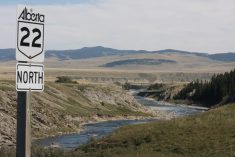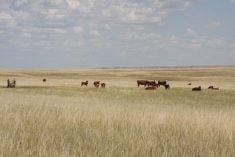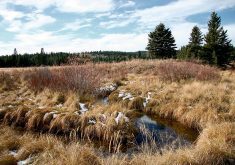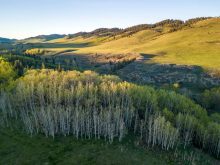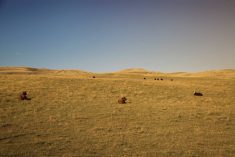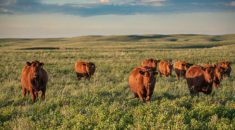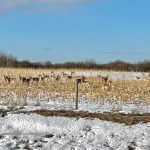Conservation has always been a passion for Tom Lynch-Staunton, and he’s found a new way to pursue that goal — moving from the beef sector to an environmental protection group.
“I’m passionate about conservation and stewardship, that’s why I am in this role,” said Lynch-Staunton, who became the Nature Conservancy of Canada’s new Alberta vice-president this summer.
His family has been ranching in Alberta since the 1890s and for many years Lynch-Staunton co-managed Antelope Butte Ranch near Lundbreck with his brother. He has since worked for Livestock Gentec, the Canadian Cattlemen’s Association and, most recently Alberta Beef Producers.
Read Also

Grazing ‘sweet spot’ boosts pasture performance
Timing-focused approach to pasture management touted to boost forage growth, livestock gains while also cutting farmer labour and inputs
The Nature Conservancy of Canada is a natural fit because of its focus on conserving grasslands, he said.
“Why this complements the beef industry so well is because all these grasslands that we’re trying to conserve can become working landscapes where you can still raise cattle on them, and have a positive environmental impact.”
But grasslands are still being lost to cultivation and development.
“We’d like to try and preserve the 20 to 25 per cent that we’ve got left on the Prairies, for ranchers and for other grazing,” said Lynch-Staunton.
In announcing his hiring, the conservancy pointed to the completion of the Jim Prentice Wildlife Corridor (connecting wildlife corridors in the Crowsnest Pass) and connecting protected spaces in the Beaver Hills Biosphere Reserve as priorities. But there are numerous others, said Lynch-Staunton, citing aspen parklands around Edmonton, an area east of Red Deer, the Rocky Mountain Front near Sundre, and the eastern Prairies to the Saskatchewan border.
Over the past 50 years, the Nature Conservancy of Canada says it has done more than 200 projects in Alberta, covering 1.1 million acres. It has about 35 employees here, many of them field staff who have developed strong collaborative relationships with landowners and ranchers, said Lynch-Staunton.
“That’s where you can get double benefits,” he said. “We’re trying to keep ranchers on the landscape. Sometimes we help with financial resources to be able to do so. Not only can we get environmental outcomes, but we can also get economic outcomes for ranchers.”
The pandemic has given many people who work on the land a renewed appreciation for the natural world, and prompted many more to get out and enjoy nature, he said.
“We’re self-reflecting and realizing what is important. Nature, for me, is at the top of the list. I think so many people are trying to get out of their house and the cities and enjoy some of the nature we have in Alberta.”
That increased awareness will be the spark for more conservation, he predicted.
“It’s quite an opportunity to do such great work with Alberta — with communities, the government of Alberta and businesses that are investing in nature. We are so lucky to have natural capital in its native, natural state. We should be able to conserve it well into perpetuity.”
The stewardship of farmers and ranchers is critical and Lynch-Staunton said it’s important for landowners to realize the impact they have on the landscape.
“We’re trying to conserve space for people to enjoy wildlife diversity and birds. I think we’re going to do something that is beneficial for the world,” he said.




